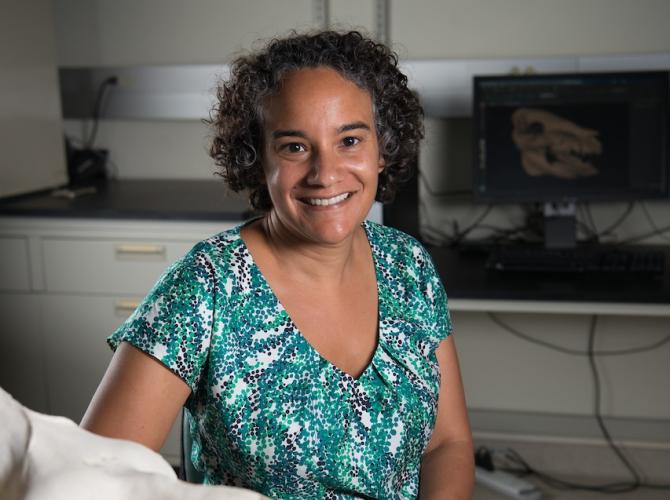
Heritage College anatomy professor receives NSF grant to study swallowing in mammals

Susan Williams, Ph.D., professor of anatomy in the Heritage College of Osteopathic Medicine's Department of Biomedical Sciences, received a three-year grant from the National Science Foundation to study the evolution of the anatomy and biomechanics of swallowing in mammals.
Williams’ lab focuses on the physiology and biomechanics of feeding in mammals. With this $440,379 award, Williams will expand upon this work by examining the evolution and biomechanics of the hyoid and pharynx (throat), which are both essential to swallowing. Establishing a deeper understanding of the anatomy and biomechanics of this region across mammals will shed light on the evolution and diversification of powered swallowing, made possible by a complex and jointed hyoid and the many muscles attached to it.
Swallowing is a process essential for sustaining life but it is not always safe (think aspirating liquid or choking on food), making it important to understand how exactly it works. The hyoid, located at the base of the tongue, is anchored to the skull with ligaments and muscles and plays a key role in the swallowing process, as it assists in moving even small amounts of food or liquid into the esophagus.
“We don't fully know how structures in the oral cavity and oropharynx, including muscles and other tissues and the hyoid apparatus, interact to propel food to the ‘throat’ during the swallow,” said Williams. Across mammals, the shape, structure and position of the hyoid varies. The reason for this variation is not known, which raises interest from a functional perspective.
“We're looking at a whole bunch of different species purely to understand why we see a diversity of hyoid structure across mammals, how that arose during evolution and why it matters for swallowing,” said Williams. “And does this diversity explain something about the diversity of mammals in general in terms of their feeding behaviors, their body size or other aspects of their biology?”
Williams is working with fellow investigators Callum Ross, Ph.D., and Zhe-Xi Luo, Ph.D., with the University of Chicago, and Rachel Olson, Ph.D., with the University of Akron. In addition to tracing the hyoid variation across mammals, this research can increase our understanding of swallowing dysfunction in human patients. Some of the animals the research team is working with are animal models for human swallowing disorders.
“More insight into this can be used to understand disease processes involving musculoskeletal issues that affect swallowing, such as Parkinson’s, and build better treatment plans,” said Williams.
As part of the grant, Williams and the team will create STEM learning modules for middle and elementary school teachers to use in their classrooms. The models will incorporate elements of Williams’ research findings and provide students with a basic understanding of anatomy, evolution and trait diversity. The learning modules will be shared through the OHIO Museum Complex the only science museum geared toward K-12 students in the region.
